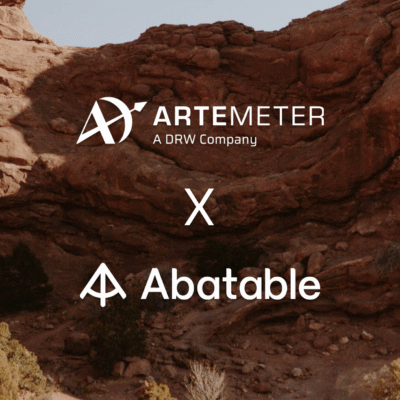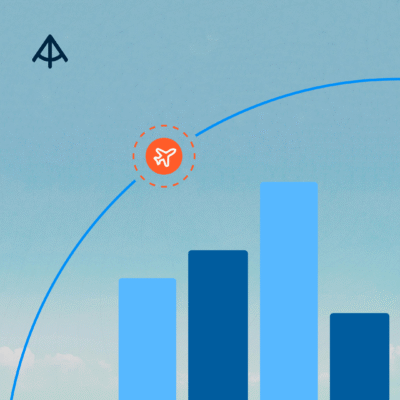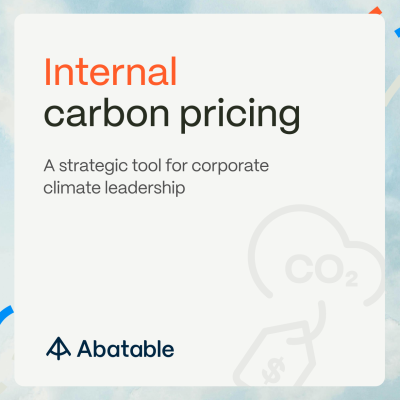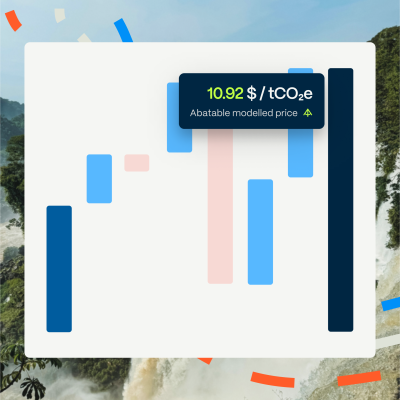Direct Air Capture (DAC) – the process of sucking CO2 out of the air and storing it away from the atmosphere – is sending ripples across the climate action landscape.
From the boardrooms of green tech giants to everyday conversations between sustainably-minded investors, DAC is perceived as exciting, puzzling, and thought-provoking in equal measure.
There is no silver bullet to tackle climate change – we need a suite of tools to arrest the relentless march of global emissions. However, to create both a low-carbon and sustainable future, we must be carbon detectives – taking a forensic approach to identify and prioritise the most impactful, viable solutions.
This article will ask whether DAC is one of these potential solutions or a Pandora’s box containing hidden emissions and health impacts. Given there is no singular, universally accepted viewpoint on DAC, how should we navigate this nuanced technology?
We will explore how the technology works, the key pioneers and project developers shaping its evolution, and DAC’s economics in the form of current costs and the scope for their reduction along the cost curve.
The ABCs of DAC (Direct Air Capture)
Direct air capture is a meticulously engineered process designed to remove CO2 directly from the atmosphere using specially designed sorbents and solvents.
At the start of the process, fans pull in ambient air, passing it over these engineered chemicals, which selectively bind with any CO2 present, capturing the gas. Depending on the chemicals’ medium (i.e. a solid adsorbent or basic aqueous solution), we can categorise DAC into one of two approaches – solid or liquid DAC. With the application of heat, the CO2 can be released in a concentrated form, ready for various utilisation or storage applications.
Two sides of the coin
While this intuitive approach to lowering atmospheric CO2 sounds promising, some weighty challenges need to be overcome.
The power-intensive nature of DAC is a significant hurdle. Capturing CO2 from the air is far more energy intensive than from a point source because of the lower parts per million of CO2 in ambient air compared to flue gas. This contributes to a higher cost relative to other capture technologies and applications. On top of this, if fed by carbon-intensive energy, DAC’s upstream emissions could theoretically exceed those the technology captures, creating a counterproductive cycle.
Moreover, DAC is expensive. Even with an optimistic assumption of the technology costing $150 per tonne of captured CO2 by 2050, if solely relied on to remove the required 10 gigatonnes of CO2 annually to limit dangerous climate change, it would cost approximately $1.5tn.
This is a daunting price tag for DAC’s large-scale deployment but, as highlighted by BCG, it is arguably affordable at <1% of projected global GDP.
Finally, it’s important to note that DAC’s impact extends beyond carbon capture. Research from the Royal Society of Chemistry underscores that the technology has hidden social and health costs, primarily driven by air pollution from fossil fuel combustion (should this be used to power it) and uncaptured upstream emissions.
Even when powered by renewable energy DAC will still create harmful emissions from the life-cycle emissions associated with equipment’s manufacture, installation, operation, and decommissioning. There will also be potential combustion emissions from the sorbent regeneration process within the DAC system. Therefore, we must consider DAC’s indirect societal impacts alongside its carbon capture potential.
These points don’t necessarily negate the value of DAC. Rather, they underscore the need for a nuanced understanding of both its potential and challenges. We must consider DAC’s indirect impacts alongside its direct carbon capture potential.
Developers that Abatable engages with remain acutely cognisant of these complexities and are steadfastly committed to refining their technology to minimise negative impacts and maximise DAC’s positive contributions to climate mitigation.
The DAC landscape: an overview
The landscape of DAC is steadily expanding and is peppered with innovative companies all pushing boundaries and trying to scale the technology. The distribution of these developers extends across the globe, spanning countries from the US to the UK, Norway to Kenya, and beyond.
A thriving DAC ecosystem comprises more than just “DAC developers” – it includes implementation partners, technology providers and storage and utilisation providers, each playing a pivotal role in bringing projects to fruition:
- Technology providers engineer the hardware to capture CO2 from the air;
- Implementation partners offer the infrastructure, financing, and regulatory expertise to install and operate these systems; and
- Storage and utilisation providers safely sequester the captured CO2 in geological formations or utilise it in synthetic fuels, plastics and building materials.
Climeworks, Carbon Engineering, and Global Thermostat stand as the vanguard among the assembly of DAC trailblazers. Collectively, they capture just over 10,000 tonnes of CO2 each year. Half is sold for utilisation in products, the other is permanently locked away in geological storage.

Climeworks’ Orca plant. Photo: Climeworks
Climeworks, to date, runs the world’s largest DAC plant, Orca (pictured above), which captures 4,000 tonnes each year. Its second plant, the 36,000-tonne Mammoth, is currently under construction.
However, another venture is coming for the title of largest DAC plant. 1PointFive, a subsidiary of Occidental, in collaboration with Carbon Engineering, is working to build an all-inclusive DAC and sequestration solution in Texas capable of capturing an unprecedented five million tonnes of CO2 annually.
The mission is to commence operation by 2035. Additionally, the venture’s audacious plan has another objective – to have 100 plants, each with a capacity of one megatonne (one million tonnes), in operation by 2035, giving a total projected capture volume of 105mn tonnes annually.

Table of the three main DAC technology providers and their projects. Table: Abatable. Data: World Resources Institute, 2022; iScience, 2022
For more on the DAC ecosystem or to enquire about our project mapping services, get in touch.
Downstream dynamics
This interplay of various capture and distribution players is crucial, but it’s just one side of the story. Equally important is understanding the downstream dynamics – what the market does with the captured carbon.
The balance between the two paths – storage and utilisation – has significant implications for the viability and impact of DAC technologies. While sequestration provides a direct method of permanently removing CO2 and is the most climate-friendly option, the development of a market for CO2-utilising products can create additional revenue streams that could help offset the operational costs of DAC and bring it down its cost curve.
The end-use of captured carbon from DAC requires careful selection. Practices like enhanced oil recovery (EOR) can be wolves in sheep’s clothing, inadvertently encouraging more fossil fuel extraction.
Ready-for-market carbon capture and utilisation (CCU) applications (e.g. producing low-carbon building materials) may offer a more immediate path to scaling than DAC coupled with carbon capture and storage (DACCS), however, and boast more established end markets. The global cement market was valued at $326.81bn in 2021 and is expected to reach $481.73bn by 2029. It is primed to absorb some of DAC’s costs.
Once we’ve reached critical mass and can scale DAC, we can unlock the vast treasure chest of geological storage available to absorb some of this captured carbon. Europe alone is estimated to boast a geological storage potential exceeding 100 gigatonnes.
Finance and economics
Current prices
In today’s market, DAC prices vary considerably, ranging from $300 to $1,600 per tonne, with the median price at a substantial $1,100 per tonne. This wide variability suggests high uncertainty, indicative of an emerging market grappling with a complex interplay of technological advancements, regulatory frameworks, and commercial realities.
Read our blog to learn more about the carbon credit prices in the voluntary carbon market.
The sizeable median price underscores a formidable barrier for companies looking to incorporate DAC into their procurement strategies. Businesses with robust operating profits and lower total annual emissions (e.g. technology companies) can afford to invest at prices well above the social cost of carbon 1. These companies can have a catalytic impact on the industry. However, DAC is restrictive at its current pricing for companies with thinner margins.
For more on carbon purchasing, read Abatable’s guide on how to build a science-aligned carbon procurement strategy.
Cost projections
The current cost of DAC is primarily determined by the energy source.
Another crucial factor is the DAC approach deployed – solid-DAC (S-DAC) or liquid-DAC (L-DAC). S-DAC is more energy-intensive but less capital-intensive than L-DAC and could potentially be better suited to dryer geographical locations.
The potential for cost reductions can also vary between the approach deployed. While modular plants (S-DAC) may promise faster scalability and cost reductions in the short term, centralised plants (L-DAC) could yield larger volume efficiencies and lower costs in the long run.
Moreover, significant cost reductions could come from accelerated technology scaling, increased collaboration across technologies, enhanced learning rates, and more supportive infrastructure. Thus, unique characteristics, geographical relevance, and the advantages or drawbacks of the approaches deployed should infer policy decisions and cost-reducing strategies to lead to a more economically viable DAC landscape.
These cost-reduction strategies are not without challenges, however. The prevailing inflation rate, for instance, presents a formidable hurdle. Achieving costs under $100 per tonne may become an unfeasible dream if the current rate persists. Moreover, without additional policy support, we may only see costs drop to the ballpark of $300-$400 per tonne, potentially hindering broad adoption. The future of DAC, therefore, rests on a critical balance between technological advancements, environmental necessity, political will and economic viability.
Notable investments and transactions
In the ever-evolving DAC landscape, we continue to see essential investments that signal significant interest in this field. Two deals that stand out in the first half of this year include the $11 million investment in Noya by Union Square Ventures (USV) and a $6 million investment into Svante by United SAF Investment.
Turning our attention to notable transactions, the deal between JP Morgan Chase and Climeworks takes centre stage. This deal represents one of the largest purchases to date, valued at over $20mn. The agreement spans nine years, during which Climeworks will deliver 25,000 tonnes. Both investments and this transaction underline the conviction that conscientious investors and corporates have in the potential of DAC and the role it could play in our fight against climate change.
Closing remarks
In this voyage through the DAC landscape we’ve navigated a multifaceted terrain rich in potential and uncertainty. We’ve had a glimpse into the heart of this innovative technology that exemplifies the complexities of engineered climate solutions, and explored some of the economic and technological nuances that shadow its evolution.
As we peer into the DAC crystal ball, we ought to remember the complexity and fluidity of the factors at play. A single prediction or definitive viewpoint does not hold water in the face of such a dynamic field. While looking at our current long-term carbon removal capacity and the need for it to scale faster than alternative offset projects, we must also remember that scaling this market to address hard-to-abate and residual emissions needs to occur while simultaneously ensuring that direct decarbonisation remains a priority.
- $190 per tonne, as calculated by the US Environmental Protection Agency.















































































































